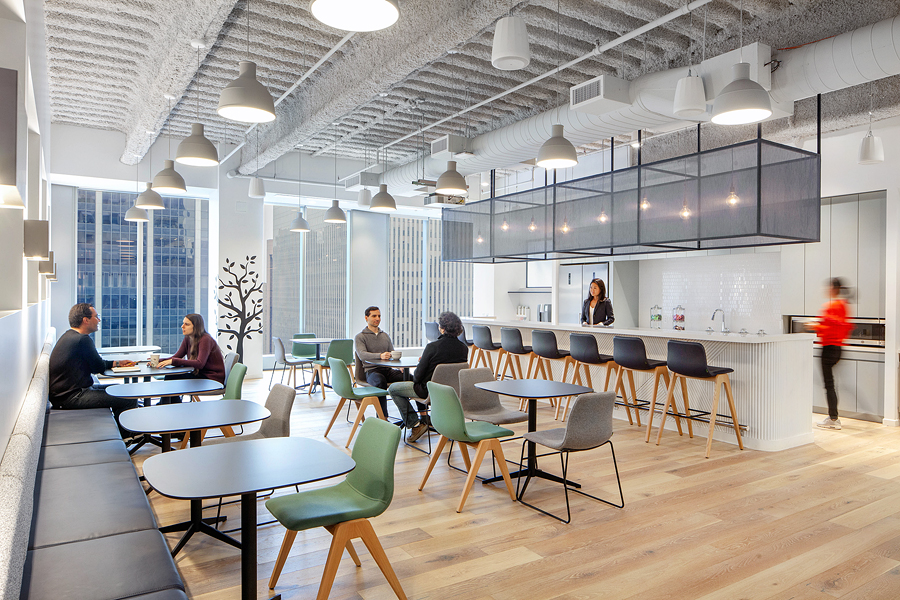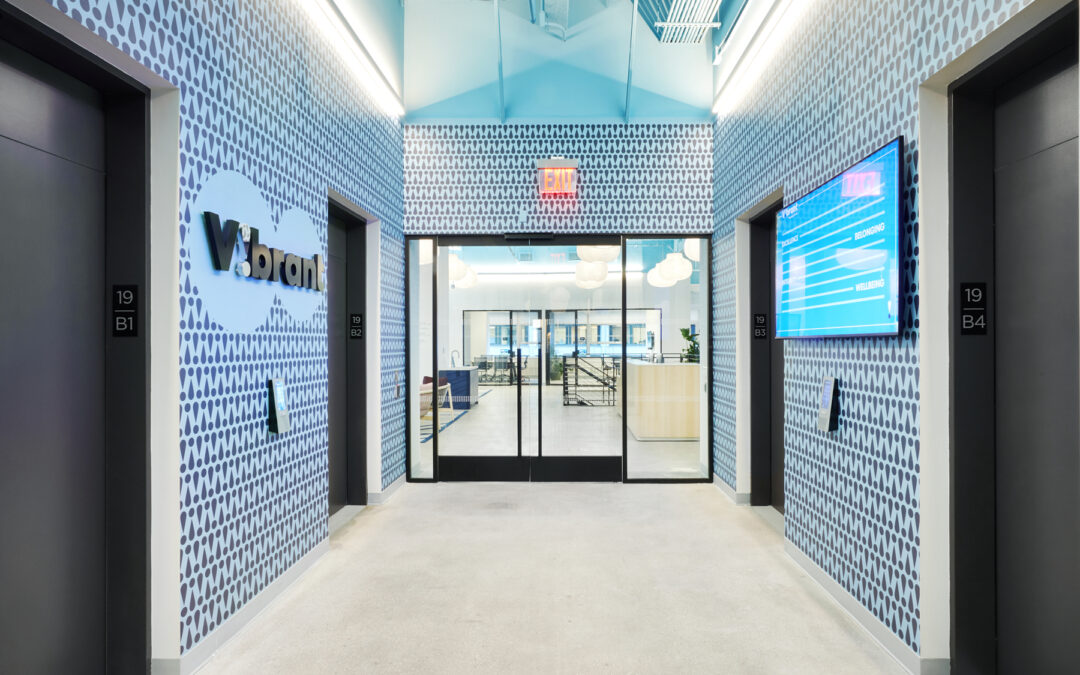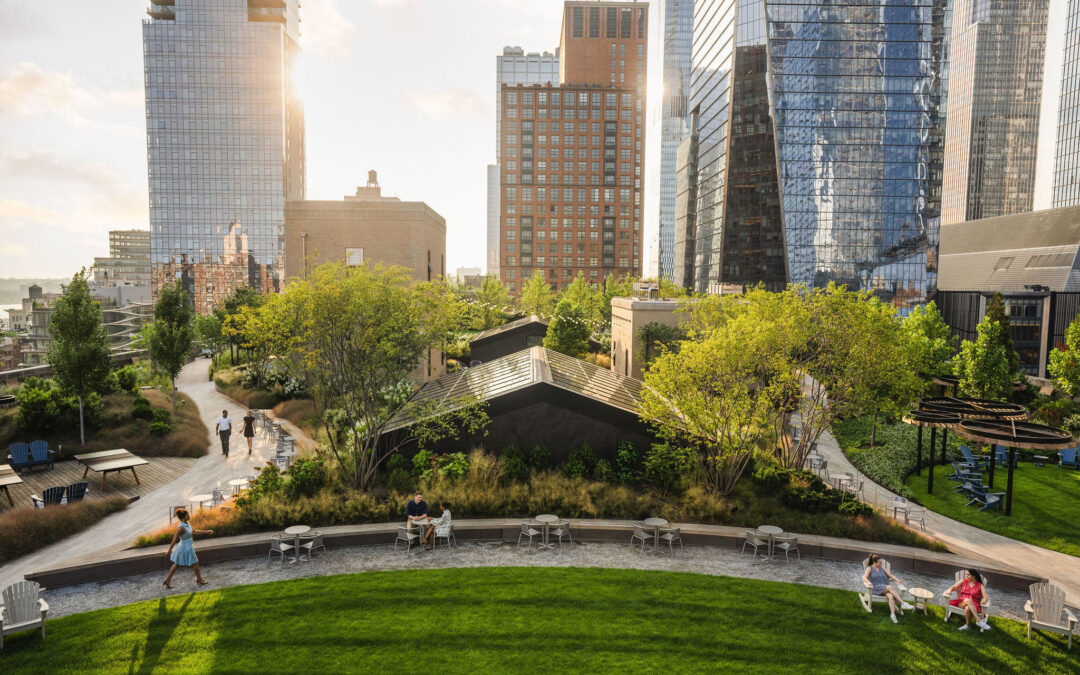Workplace Reimagined: COVID-19 to Reshape the Modern Office Experience
The American workplace has experienced more rapid, dramatic shifts in the past few weeks than it ever has before.
The real impact of COVID-19 on how millions of people work – and how they plug into a modern office – may only emerge in the coming months, say architects and real estate professionals who are not only navigating vast changes in their own businesses but also helping their forward-thinking clients plan for a post-pandemic world.
The wholesale move to remote working in response to the crisis has quickly changed habits, exposed weaknesses, and opened new opportunities for the work environment, say experts at Montroy DeMarco Architecture (MDA), Urbahn Architects, and Denham Wolf Real Estate Services. And it is forcing these professionals to assess the long-term implications for critical variables such as space utilization, technology, leases, operating costs, and corporate culture.
The immediate jolt has come from what is essentially a remote working experiment – one that so far has worked, says Daniel Montroy, AIA, partner at MDA and its affiliated interior design firm Montroy Andersen DeMarco (MADGI).
“I’ve joked that I don’t know if we’re coming back to the office,” he says. “A lot of what businesses do is outdated, and it’s led to thinking about what are the things you can do remotely, and how you might design an office that works best in that environment. If we do this for two more months, I think the landscape changes, and we’re trying to imagine what it will look like in the short- and long-term.”
This is brand new territory for a lot of businesses, and for many it is shaking up normal routines, says Paul G. Wolf, co-president at Denham Wolf.
“For organizations that had not fully explored remote work, this pandemic forced the issue,” he says. “We are all seeing first-hand the incompatibilities between remote work and our existing systems, operations and culture – and companies are accelerating their capacity to overcome them. For many organizations, remote work in some form will become a more practical option.”
An important initial step has been to minimize the severity of these abrupt changes by maintaining normal interaction, says Rafael Stein, AIA, who is principal at Urbahn Architects.
“We are very intentionally endeavoring to maintain our office culture as that goes to the heart of who we are, how we work, and what we design for our clients and society at large,” he says. “Our work is organized much the same way it always was, but we are having more scheduled communications.”
But some organizations – even as they adjust on the fly – are already mapping out what their future space templates will be, usually mixing more remote working with redesigned offices that serve as a central hub for resources, culture, and in-person collaboration, says Steven Andersen, partner at MADGI.
“An office space allows for collaboration, head-down work, creative work, and production work not always available in a work-from-home environment,” he says. “We see flexibility in design and policies. More companies will adapt after realizing that working from home can succeed.”
Space Utilization Redefined
The post-pandemic world may bring sweeping change to commercial real estate, spurred by new thinking around how work gets done and how space gets used. A prime spark for such ideas is a basic calculation: more remote working translating into less office space leased, Andersen says.
“If they begin to stagger their work-from-home days amongst employees, they will be able to presumably cut down on the size of office space required. Alternatively, some companies might opt to maintain the current size of their office real estate but use it to provide fewer on-site employees with more ‘elbow room,’” he says.
Many new layouts may involve less density, creating more space between individual workspaces to acknowledge the need at times for greater social distancing, Andersen adds.
An uptick in remote work and a reorientation of office layouts will also catalyze the need for more flexible formats, including the transformation of private workspaces into ones that multiple employees can share. “When partially or fully remote staff members do come into the office, some of them will be using non-dedicated space for their work,” Wolf notes.
The office also will become the main hub for in-person meetings and group interaction – requiring substantial space for conference rooms, conversation hubs, and flexible private areas of all sizes. “The physical workplace will become dedicated to team collaboration and creative work,” Montroy says.
The new workplace will also retain a key role as repository for an organization’s physical assets, such as documents, storage, equipment, and technology infrastructure, Montroy adds. “It’s not appropriate to expect we’ll store that in someone’s basement,” he says.
Versatility and Functionality
Offices may also step up amenities for employees as a way to foster better interaction when people are together, designing higher-end pantries with better food and beverage selections, as well as after-work event spaces, fitness studios, gaming rooms, and even music listening areas, Andersen says.
A key theme for such new designs will be efficiency in layout and resiliency in usage. Pantries and cafés may double as multi-function spaces for events and entertainment, and furniture may play similar roles, with coffee bars and counters also serving as workstations, he says.
“In these designs, your drink bar counters may need charging infrastructure and ergonomic design,” Andersen says. “Space functions will be interchangeable, with private offices that not only can be shared by multiple employees but also be convertible into meeting rooms.”
Office designs may also incorporate more features that elevate hygiene and employee safety, Montroy says. “Technology- and equipment-wise, offices will likely see more hands-free and easy to disinfect fixtures and materials, such as self-opening doors and non-porous surfaces,” he predicts.
And offices will become even more essential as tools for brand and identity.
“It will be the primary space for client visits and presentations, even if most of the work will be completed outside its walls,” Andersen says.
MDA has incorporated some of that forward-thinking into a new design project for a client – a pre-built office suite for the owner/manager of a commercial building in Manhattan’s Financial District. The design started in the first days of the pandemic shutdown, as MDA discussed with its client how offices might evolve in the future, Montroy says.
“They said, ‘That’s an interesting idea – show us what you mean,’” he explains. “In response, we are currently designing a pre-built office that would house 30 people and feature these new concepts. The suite will have a greater number of meeting and conference rooms with expanded video conferencing capabilities; a larger and more elaborate pantry that will double as a social and co-working space; and a flexible layout featuring wall systems that accommodate easy functional changes to most spaces. The design also features a reduced occupancy density, better technology, hands-free devices, cleanable surfaces, and an increased air filtration.”
Advanced Technology
Workplaces reconfigured to accommodate remote working may also require communications technology upgrades.
Montroy suggests that offices may need conference rooms better equipped for advanced networking and video conferencing, as well as new digital interaction tools. In some cases, that may mean owners add new amenities for use by multiple tenants.
“Since not all tenants will require a large, high-tech meeting space every day, access to such shared space may be increasingly requested of landlords,” Wolf explains.
Tech upgrades must also envision greater support for remote workers.
“The majority of employees have been shown to work efficiently from home,” Andersen says. “To continue this trend, companies will have to develop new management procedures to track, complete, and assign tasks to individuals and teams. They will also need to invest in new software and Virtual Private Network (VPN) systems for faster and better quality data connections and to provide employees with access to shared documents.”
Facilitating Interaction
Today’s vast remote working experiment has created new flows of information and conversation among employees. Organizations are learning in real time about the benefits and pitfalls of offices with heavy remote working usage.
“Just like Urbahn, other organizations are likely holding more meetings than back in the days of physically being in the office, when some communication took place informally and unscheduled. A successful switch to online meetings requires not only a technological response, but also training and sharing of knowledge about the most effective ways to conduct and participate in video meetings,” Stein says.
There are benefits from expanding remote work and using technology for intra-company interactions.
“Communication is now more frequent and in some ways better. Efficiency for ‘head-down’ work has increased. This experience of a virtual workplace has been in many ways positive and the lessons learned will create new opportunities for businesses and designers,” he observes.
There also are snags and other issues to resolve, however, to make remote working more efficient and productive. One area is ensuring that the technology at employees’ homes is compatible and up to the required tasks.
“Troubleshooting the issues of 60 different people, each with their own hardware issues, internet issues, and technological sophistication, is very difficult because there are so many variables,” Stein says. “Making sure we have the appropriate conference/chat/collaboration software, and that all the right people have them and know how to use them is important.”
Another key issue is understanding how remote working affects meetings and other interaction.
“Video conferences are inherently more strenuous than physical meetings because they must be much more structured, and often take more time than a physical meeting to cover the same content,” he explains. “Meetings need to be rigorously moderated, but that also means that it is harder to have the important and very human chatter that helps to break up the tension in a meeting, or sometimes in fact leads to important ideas that you might not have explored in a highly structured meeting.”
Stein says for disciplines such as architecture that are very visual, it also can be frustrating to translate ideas remotely or to spontaneously sketch a new concept remotely.
“We are still working on technology and procedure workarounds,” he adds.
Leases and Costs
The post-pandemic era may also usher in new thinking about underused spaces, with tenants possibly seeking greater flexibility for subleasing or desk licensing, Wolf says. “The next time a tenant is faced with a lease expiration, the organization may have different priorities for their lease terms,” he adds.
Real estate owners also must consider the possibility of reduced demand for square footage.
Andersen says, “Companies may need less space as they reconfigure for efficiency and an office culture that accepts remote work on a larger scale.”
Owners may see that trend mitigated where businesses decide to give employees more room. More efficient office layouts also may mean fewer dedicated amenities for each tenant.
“Many tenants already share restrooms, and they may become more interested in sharing pantries, meeting space, mail rooms, production space, and more,” Wolf says.
Given the nature of the pandemic, tenants may also increasingly ask for assurances around common area sanitization, air filtration, and other protections related to contagion. Landlords may find themselves negotiating more frequently with groups of tenants together as some organizations may explore full co-location with peer outfits.
“Many such moves will be cost-driven,” Wolf says. “Organizations are now facing even more pressure to reduce their occupancy costs as the pandemic has negatively impacted revenue generation for almost every industry.”
Emphasizing Corporate Culture
Organizations forging workplace changes in the heat of this crisis must continue to mind their office ethos, Wolf asserts.
“We believe that mission should always lead,” he says. “When making changes to company policy, office layout, or otherwise, the primary drivers of decision need to be mission, culture, and corporate values.”
Organizations should remember there are tools to preserve culture in the interim, utilizing methods such as daily email updates, random check-in calls with employees, group continuing education sessions, and virtual social events, Stein says.
“When we all worked in the office together, we could just say ‘hi’ to someone, whether we worked with that person on a daily basis or not,” he says. “We are trying to help maintain a sense of community.”
Source: EHS Magazine / Photos: Peter Dressel/Wilk Marketing Communications



Vibrant Emotional Health’s Headquarters Receives 2024 Project Profile Award by Commercial Construction & Renovation (CCR) Magazine
Vibrant Emotional Health Headquarters, New York, New York Affiliate Designer: Montroy Andersen DeMarco, Contractor: Benchmark Construction The $10 million, two-story 60,000 SF office houses mental health and emotional counseling personnel, as well as all...

Morgan North Receives 2024 Honor Award for Excellence in Landscape Architecture
We are thrilled to announce USPS Morgan North's 2-acre Rooftop Landscape is the recipient of the American Society of Landscape Architects, New York Chapter's (ASLA-NY) prestigious "Honor Award". This award recognizes excellence in the practice of landscape...

NYREJ’s 2024 Women in Construction Spotlight: Jessica Gross, Associate AIA & WELL AP
New York Real Estate Journal's 2024 Women In Construction: Jessica Gross, Associate AIA, WELL AP, Designer & Furniture Manager, Montroy DeMarco Architecture LLP “Jessica is an accomplished designer, who excels in managing multiple projects at iconic...
